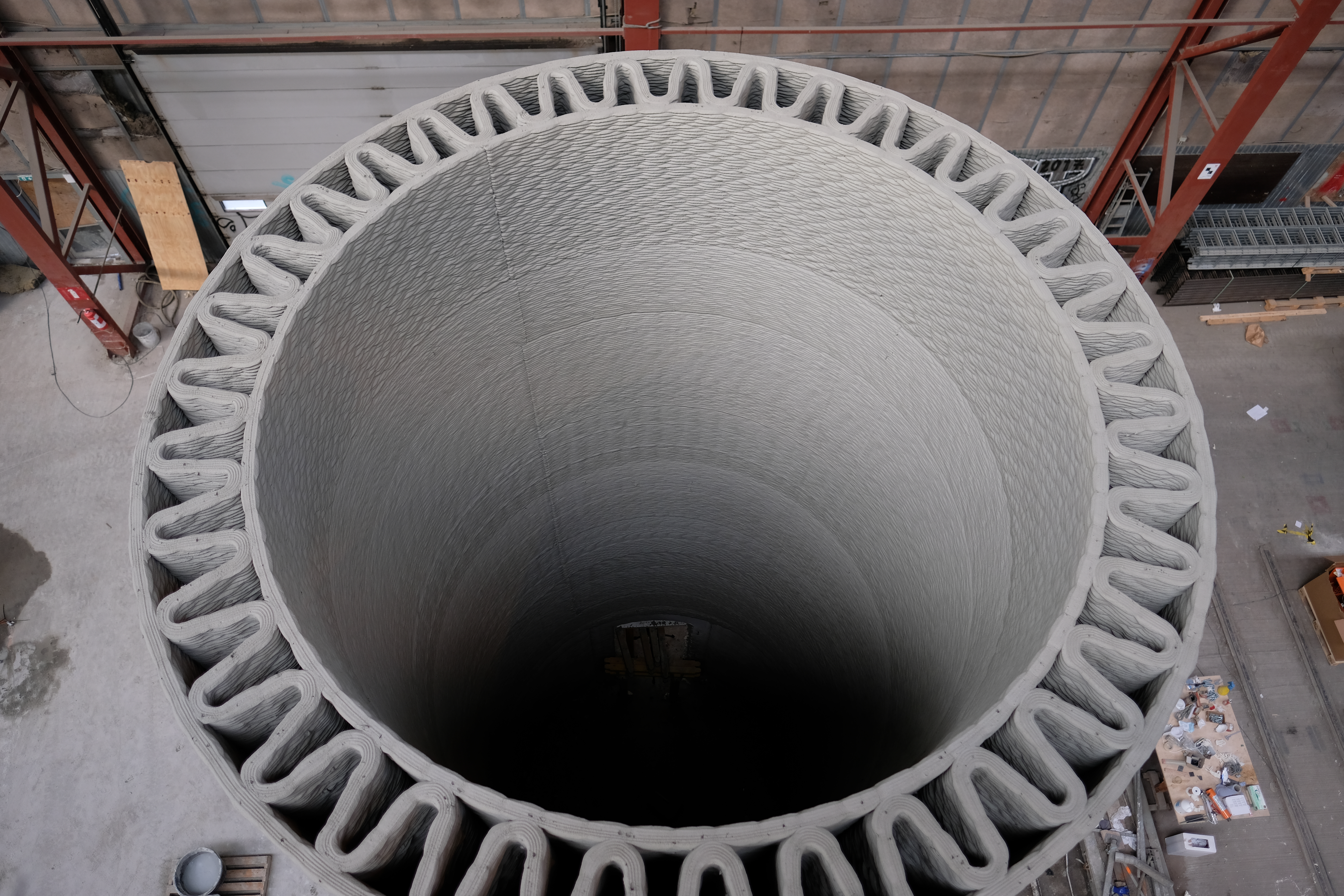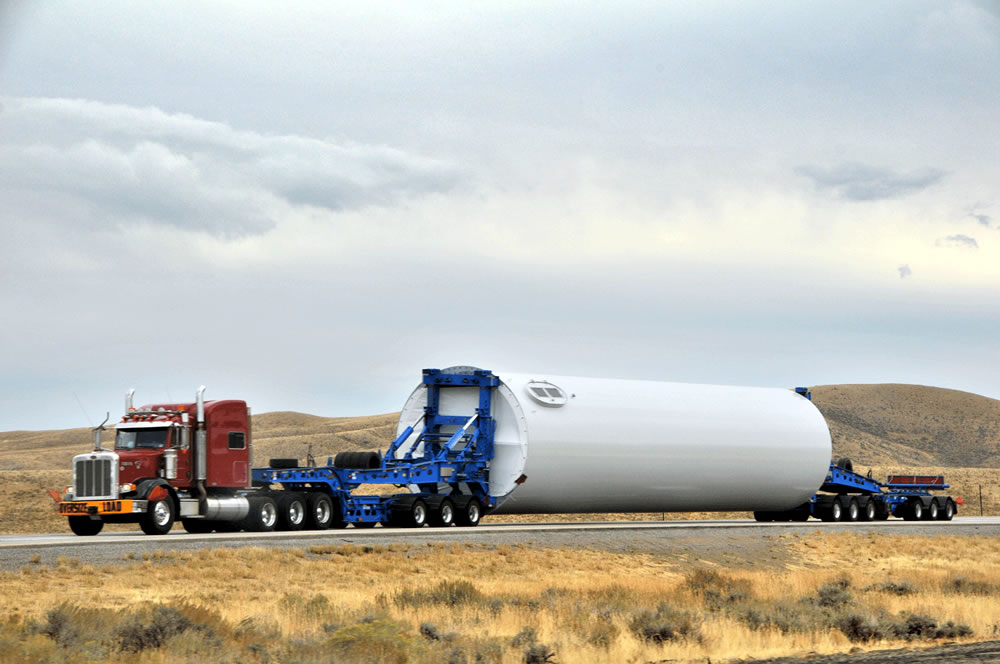GE Renewable Energy, COBOD, and LafargeHolcim have announced a three-way partnership to co-develop 3D printed, “record-tall” wind turbine towers. Leveraging COBOD’s concrete printing technology with LafargeHolcim’s leading construction materials, GE will be able to tie the multi-year project together with its extensive resources. The trio intends to boost global renewable energy production while lowering the levelized cost of energy.
Edelio Bermejo, Head of R&D at LafargeHolcim, states: “Concrete 3D printing is a very promising technology for us, as its incredible design flexibility expands the realm of construction possibilities. Being both a user and promoter of clean energy, we are delighted to be putting our material and design expertise to work in this groundbreaking project, enabling cost-efficient construction of tall wind turbine towers and accelerating access to renewable energy.”

Record heights
The wind turbines of today, typically built-in steel and precast concrete, are usually no more than 100m in height. This is due to the diameter of the base being limited to 4.5m as anything wider than this cannot be transported to the site of the turbine by road – not without additional costs at least.
The ability to print the base on-site with a concrete 3D printer would allow for the construction of wind turbine towers in the region of about 200m. This additional height certainly comes with its perks, as a 5MW turbine at a height of 80m typically generates about 15.1 GWh annually. Hike that same turbine up to a height of 160m and it generates 20.2 GWh annually – an extra 33%.
Matteo Bellucci, Advanced Manufacturing Technology Leader for GE Renewable Energy, adds: “3D printing is in GE’s DNA and we believe that Large Format Additive Manufacturing will bring disruptive potential to the Wind Industry. Concrete printing has advanced significantly over the last five years and we believe is getting closer to having real application in the industrial world. We are committed to taking full advantage of this technology both from the design flexibility it allows as well as for the logistic simplification it enables on such massive components.”

The prototypes of tomorrow
Last October in Copenhagen, the trio had already printed a 10m tall tower pedestal as a preliminary prototype. The next steps are to produce a “production-ready printer”, a comprehensive range of materials to scale up production, and finally a full wind turbine prototype with a 3D printed base. To achieve this, GE will offer design, manufacturing, and commercialization expertise; COBOD will focus its efforts on optimizing the 3D printing technology; and LafargeHolcim will formulate the concrete, taking charge of its processing and application.
GE and its partners are not the only ones looking to commercialize 3D printed wind turbines. Elsewhere, in coastal waters, engineers from Purdue University are working on a method of 3D printing concrete wind turbine parts for offshore use. Building and shipping steel wind turbine anchors 30 miles off the coast have proven costly, so the aim of the research is to eventually 3D print these same steel anchors out of concrete.
While extremely useful for energy applications, concrete 3D printing is also being used to develop residential projects. QUIKRETE and Contour Crafting Corporation have begun developing a proprietary concrete to be used with CC Corp’s concrete 3D printing technology. The partnership will eventually see the automated construction of residential and commercial buildings around the U.S. starting with LA.
The nominations for the 2020 3D Printing Industry Awards are now open. Who do you think should make the shortlists for this year’s show? Have your say now.
Subscribe to the 3D Printing Industry newsletter for the latest news in additive manufacturing. You can also stay connected by following us on Twitter and liking us on Facebook.
Looking for a career in additive manufacturing? Visit 3D Printing Jobs for a selection of roles in the industry.
Featured image shows a 3D printed concrete wind turbine tower. Photo via GE.



